danthebugman
BoM Nov '10
This is the first in a 3 part series of reviews that I started because I wanted to see for myself exactly how wrapper affects the flavor of a cigar. In order to do this kind of thing one needs to have a cigar of the same vitola, same blend of filler, same binder, but different wrapper. There area a few that come to mind, but the one I decided to concentrate on was the Illusione Holy Lance. Not only is it available in 3 distinctly different wrappers, but the Lancero shape really lets the flavor of the wrapper influence the cigar.
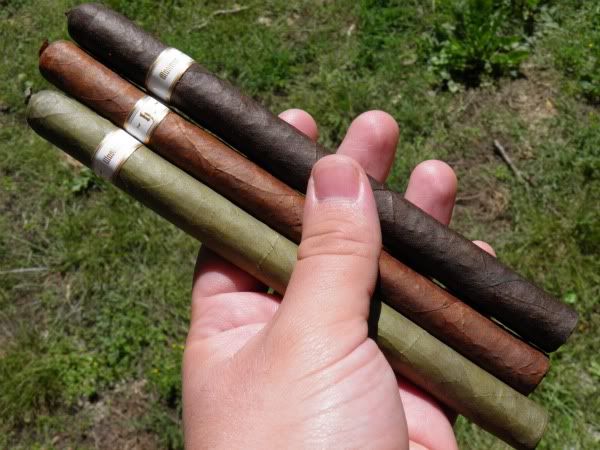
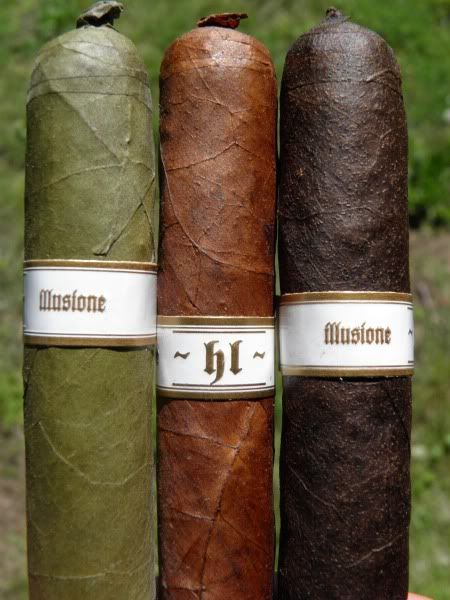
To start this series off I decided to go with the Candela. Candela wrapped cigars are not as popular today as they once were. From the 1950's through the 1970's the Candela wrapper was so popular in this country that it was termed the "American Market Selection", but today you're more likely to see them gracing a cigar you got from the local gas station or low quality bulk cigar retailers than you are on a premium hand rolled at your local B&M. But this is changing with a few companies like Illusione and Arturo Fuente putting out high quality blends featuring the Hulky green wrappers. The process of making a Candela wrapper is interesting and I thought you might find the following article from CA informative:
The Holy Lance Candela (HLC) measures 7.5 x 40 and features a pale to Kermit green color, depending on the light in which you’re viewing it. It has a soft, slightly velvety feel…very much akin to a good quality Connecticut wrapper. There are a few small veins present and tight, nearly invisible seams. There is a slight give when pressed between the fingers, but still feels well packed. Nice looking triple cap finished with a fan tail. The cigar emits a slightly sweet, aged hay aroma with occasional hints of cantaloupe.



The cap cut easily and reveals a perfect draw. This is not a minor concern to me and if you’ve read some of my reviews or comments on Lanceros you’ll know why. The cold draw features flavors of light, sweet hay/grass with a slight peppery feeling in the back of my throat.
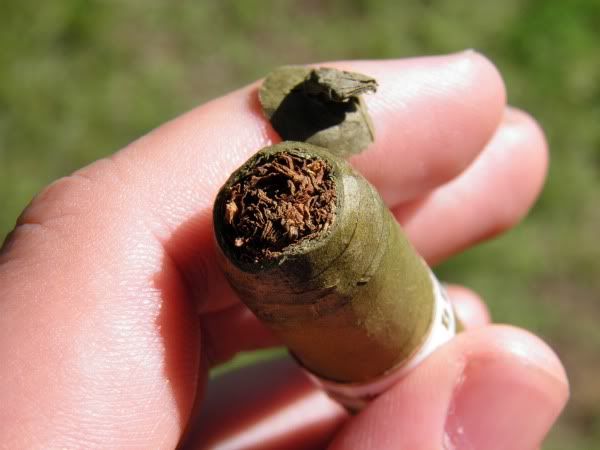
The cigar toasted and took off without much instigation. I was immediately greeted by a great deal of pepper, more than I had expected. Beneath this peppery assault on my senses loomed a sweet hay/grassy flavor. The burn started a little funky, but soon caught up and was sharp. Great smoke output.

The second inch was much the same as the first except the pepper began dropping off in intensity and the flavors became creamier overall.
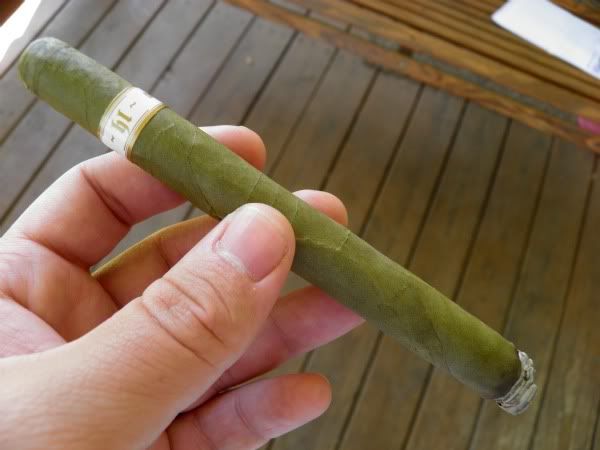
By the third inch, the pepper has died completely away leaving a woody/grassy profile. The burn is slightly temperamental and needs some babysitting to keep it straight. The ash has been a little flowery also.
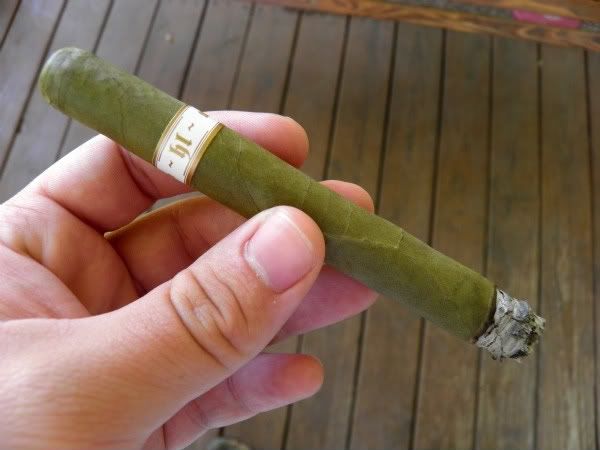
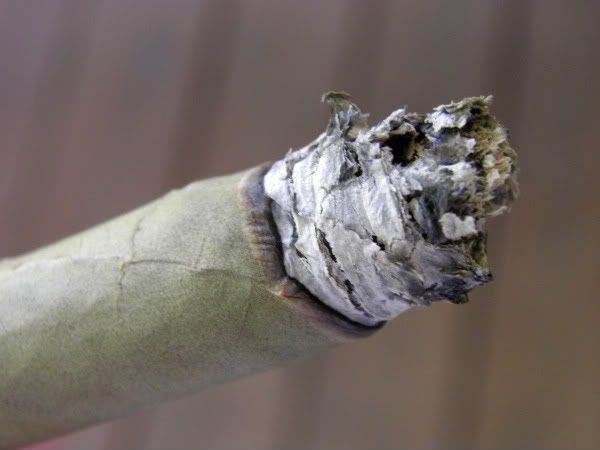
Now four inches into the cigar and past the half way point. Main flavors are very woody...like going to Lowe’s and licking a piece of hardwood. The burn and ash consistency have improved though.

The fifth inch is much the same as the fourth. The very woody profile continues and there is a stark absence of anything else to break up or add to it. I put it down shortly after this point. The taste profile wasn’t really doing it for me.

Dan
Part 2: HL Colorado
Part 3: HL Maduro


To start this series off I decided to go with the Candela. Candela wrapped cigars are not as popular today as they once were. From the 1950's through the 1970's the Candela wrapper was so popular in this country that it was termed the "American Market Selection", but today you're more likely to see them gracing a cigar you got from the local gas station or low quality bulk cigar retailers than you are on a premium hand rolled at your local B&M. But this is changing with a few companies like Illusione and Arturo Fuente putting out high quality blends featuring the Hulky green wrappers. The process of making a Candela wrapper is interesting and I thought you might find the following article from CA informative:
Now that you have a better appreciation for green wrappers let's begin...To make Candela, the barn has to be properly prepped. The walls of the wooden barn are wallpapered with cardboard or paper to seal the cracks. The barn is loaded with freshly harvested tobacco, and the vents at the bottom of the barn are opened, encouraging air to flow out of the roof vent (known as a doghouse), which is always open. The propane heaters or charcoal fires are lit, and the heat slowly rises, taking the moisture out of the leaves. "The objective is to get air flowing through the tobacco, up and out of the doghouse," says Gustavo Cura, the operations administrator for Oliva Tobacco Co. in Tampa, which grows candela in Ecuador and Honduras. "The heat has to start slowly."
Within two hours, the heat will be at about 90 degrees, and by hour No. 3, it will rise to 100. "Always gradually increasing the heat," says Cura. After 40 to 48 hours, the tobacco has wilted. Then, it's time to unleash hell.
The leaf is dry at this point, save for the stem, which is a stubborn beast. The stem takes much more coercing to dry out than the rest of the plant. The farmers shut the bottom vents in the barn and crank the heat to 165 -- Cura remembers losing control a few times and watching the temperature rage to 175 -- to blast the remaining moisture from the stem. This final step lasts for about one day, and bakes the tobacco as dry as a potato chip.
Reach up and touch the leaves in a normal tobacco barn and they feel like gummy, cool handkerchiefs. Do that in a candela barn (assuming you don't drop from the Death Valley conditions) and you'll be greeted with two eyefuls of shredded tobacco.
After 60 to 72 hours total in the barn, the chlorophyll has been locked in the leaf and the tobacco is done heating, but needs to be rehumidified so it can be safely removed from the barn.
Workers open the barn's vent doors and windows (unless it's windy), allowing the nighttime dew to make the crispy leaves moist again; if the climate is too dry, they bring in a steamer. Then, the leaves are taken down, sorted and graded, and put into boxes, ready for storage or for rolling. The fire curing eliminates the need for fermentation and aging, cutting months and even years off the typical process.
Quirks exist. Sunlight will make the leaf lighter; heat will darken the color. Candela wrapper can't be stored in normal tobacco warehouses; instead it's kept refrigerated. Water can stain it, so a roller has to know what he's doing in order to make a candela cigar by hand.
Because it's the process that makes candela, rather than the seed or country of origin, candela wrappers are grown in a host of countries. "You want tobacco that's been either shade-grown, or grown [in a place like] Ecuador, where there's no sunlight," says Perez-Carrillo.
Candela is, or has been, grown in Connecticut, Cuba, Ecuador, Florida, and Nicaragua, and for more than two decades it was the only type of wrapper tobacco grown in the Dominican Republic. Not all the leaves of a plant make good candela. "The tobacco up top of the candela turns a dark, dark green in the curing, and it's not what they're looking for," says John Oliva Sr., who runs Oliva Tobacco. "John Deere green, that's what they call it, as opposed to a 7-Up bottle green. You only have three colors in candela: yellowish green, a dark green and a green green.
The Holy Lance Candela (HLC) measures 7.5 x 40 and features a pale to Kermit green color, depending on the light in which you’re viewing it. It has a soft, slightly velvety feel…very much akin to a good quality Connecticut wrapper. There are a few small veins present and tight, nearly invisible seams. There is a slight give when pressed between the fingers, but still feels well packed. Nice looking triple cap finished with a fan tail. The cigar emits a slightly sweet, aged hay aroma with occasional hints of cantaloupe.



The cap cut easily and reveals a perfect draw. This is not a minor concern to me and if you’ve read some of my reviews or comments on Lanceros you’ll know why. The cold draw features flavors of light, sweet hay/grass with a slight peppery feeling in the back of my throat.

The cigar toasted and took off without much instigation. I was immediately greeted by a great deal of pepper, more than I had expected. Beneath this peppery assault on my senses loomed a sweet hay/grassy flavor. The burn started a little funky, but soon caught up and was sharp. Great smoke output.

The second inch was much the same as the first except the pepper began dropping off in intensity and the flavors became creamier overall.

By the third inch, the pepper has died completely away leaving a woody/grassy profile. The burn is slightly temperamental and needs some babysitting to keep it straight. The ash has been a little flowery also.


Now four inches into the cigar and past the half way point. Main flavors are very woody...like going to Lowe’s and licking a piece of hardwood. The burn and ash consistency have improved though.

The fifth inch is much the same as the fourth. The very woody profile continues and there is a stark absence of anything else to break up or add to it. I put it down shortly after this point. The taste profile wasn’t really doing it for me.

Dan
Part 2: HL Colorado
Part 3: HL Maduro
Last edited:
